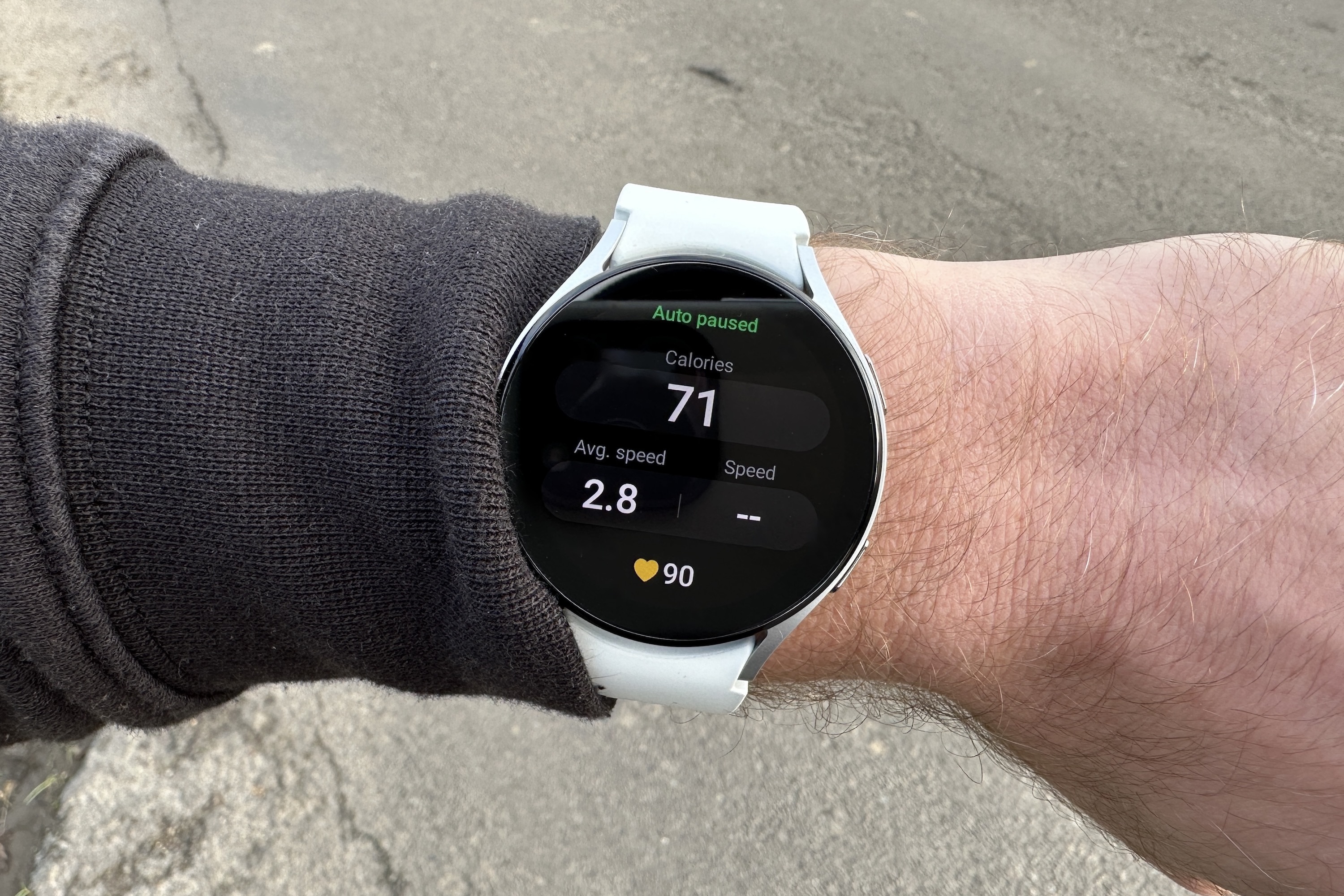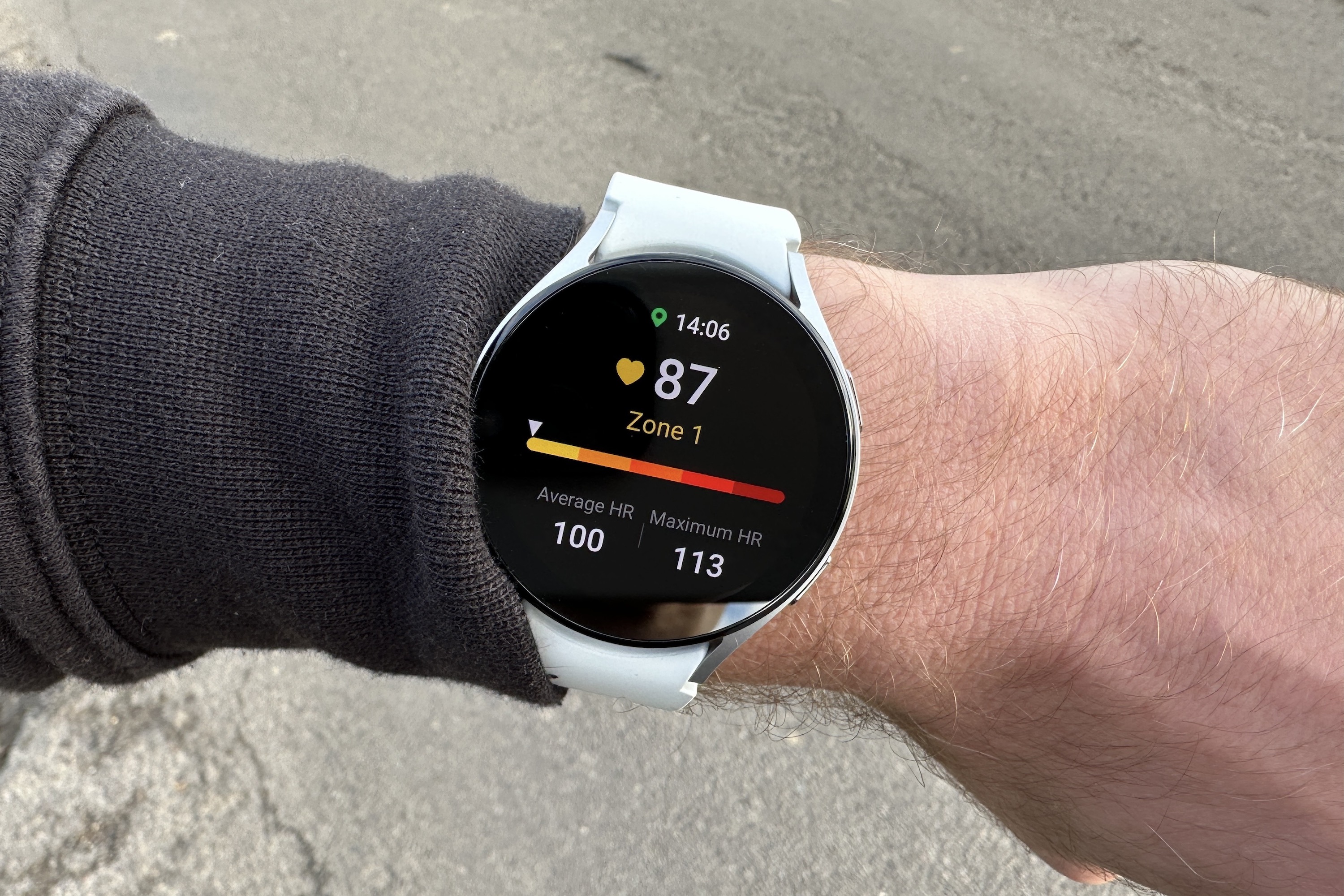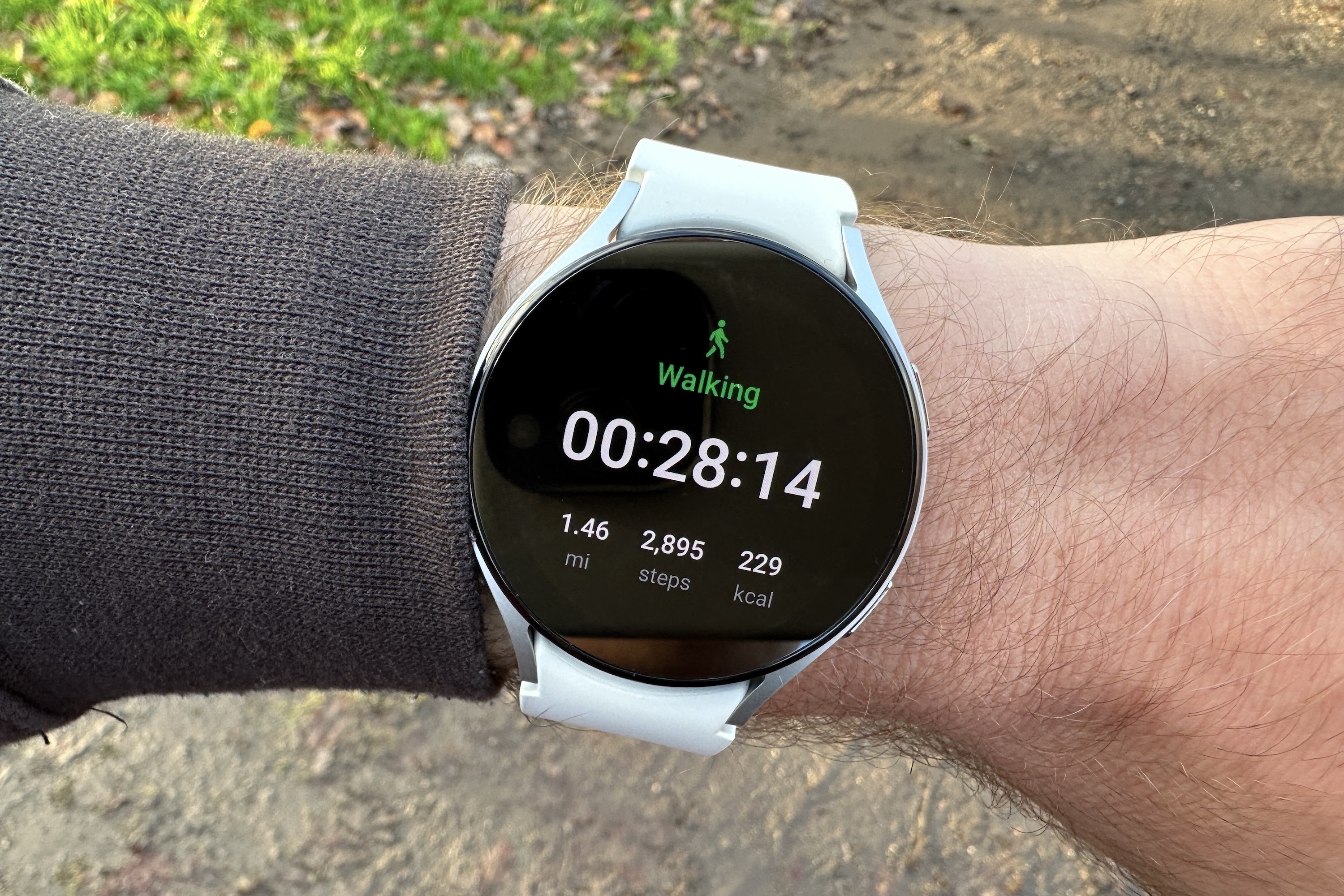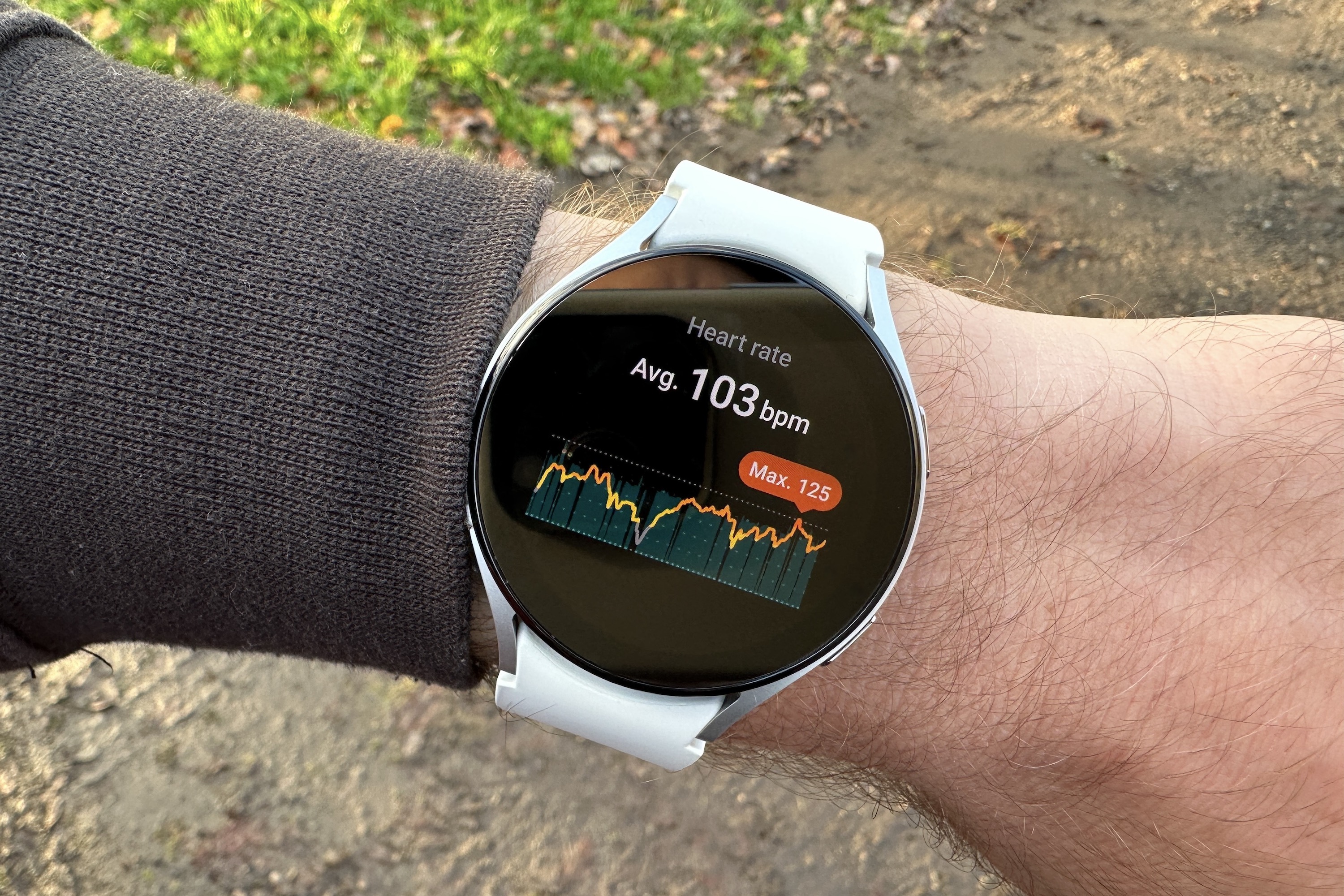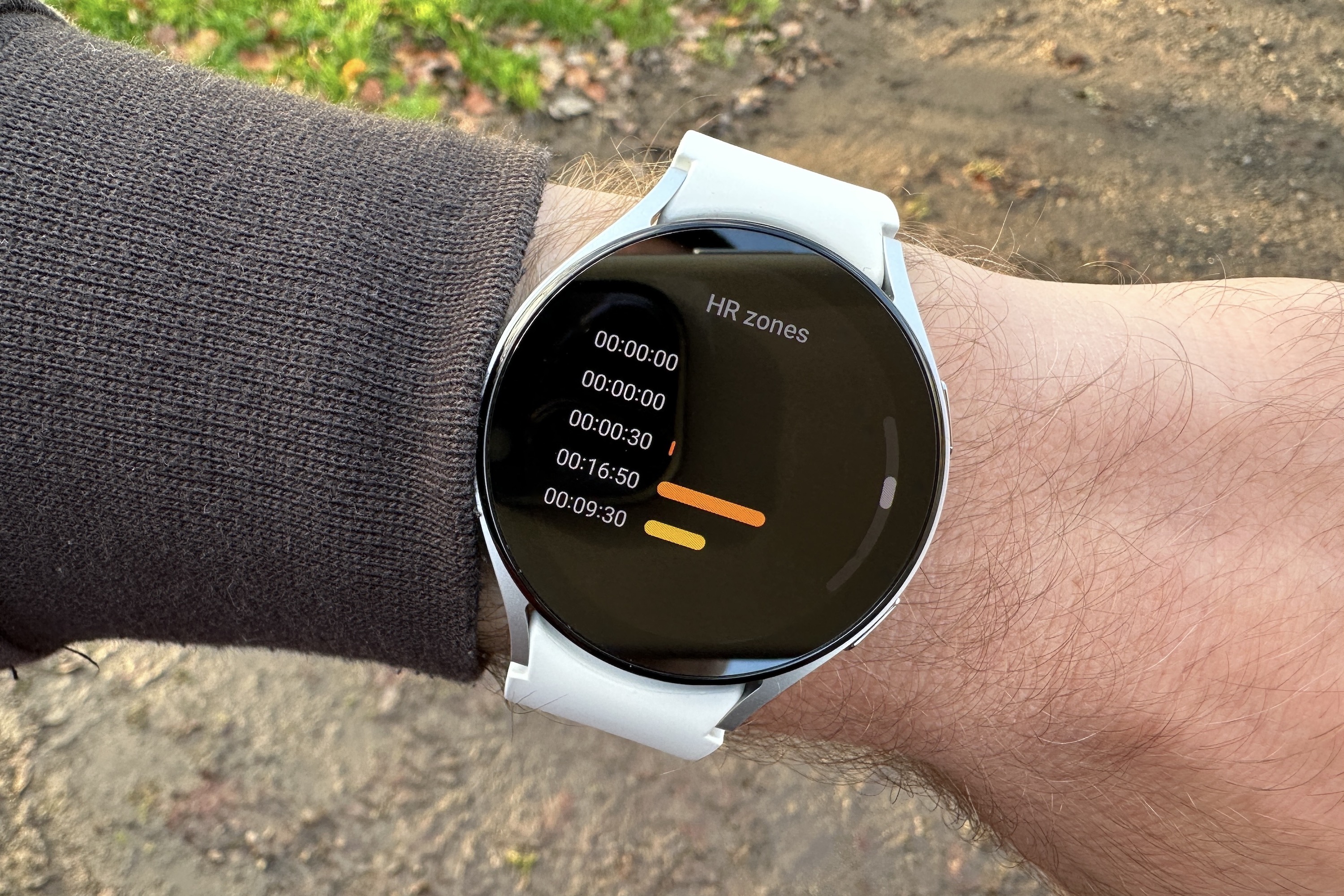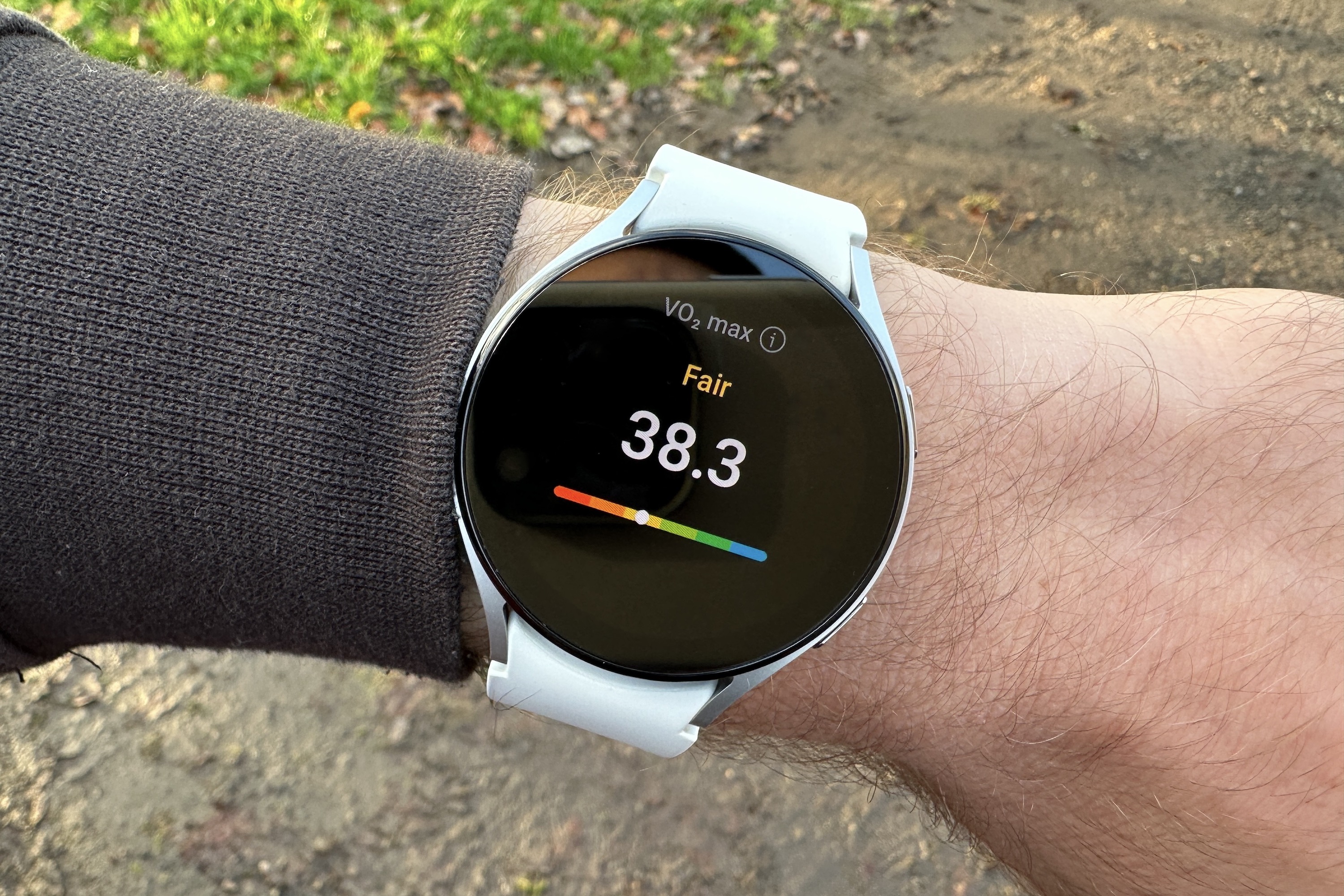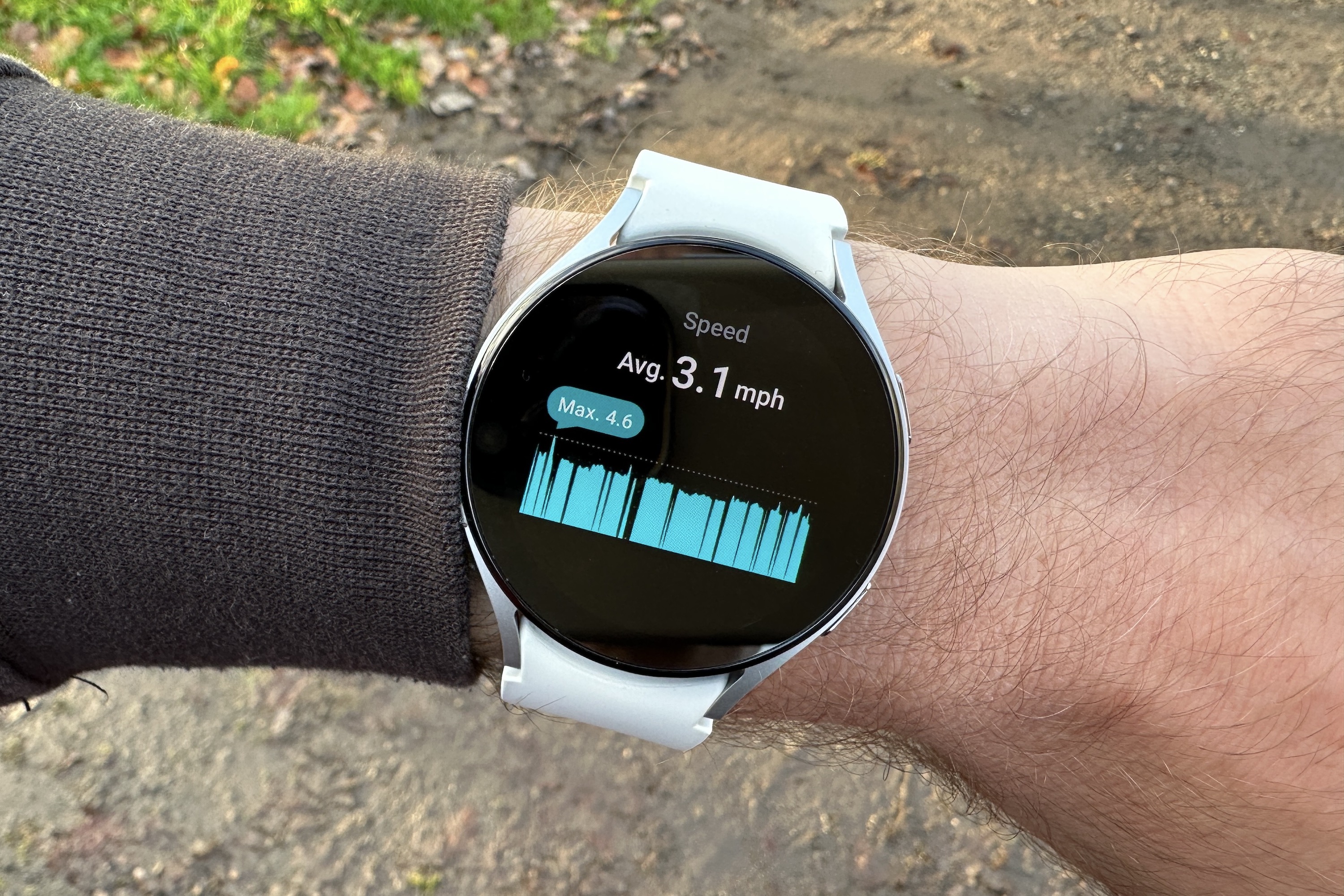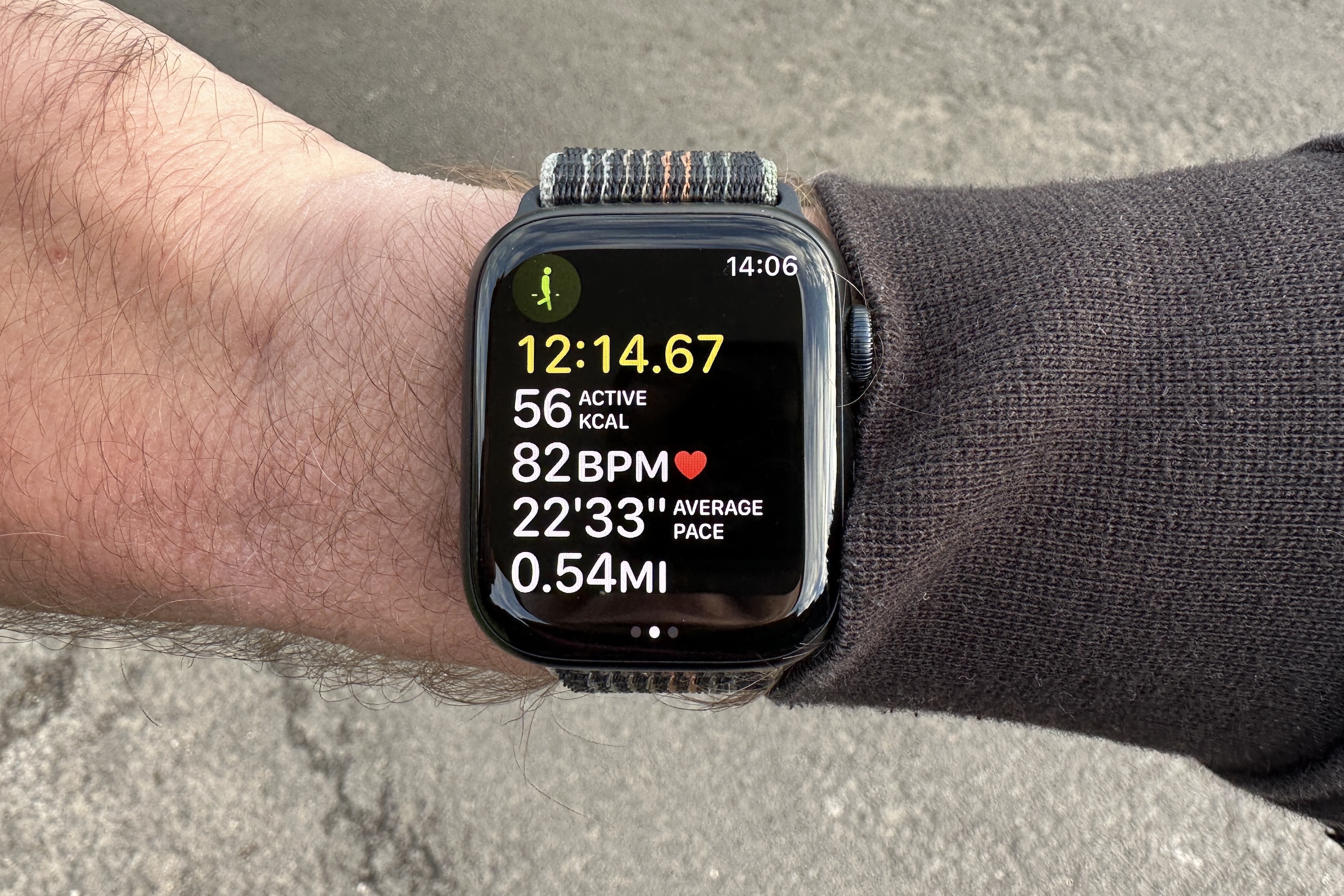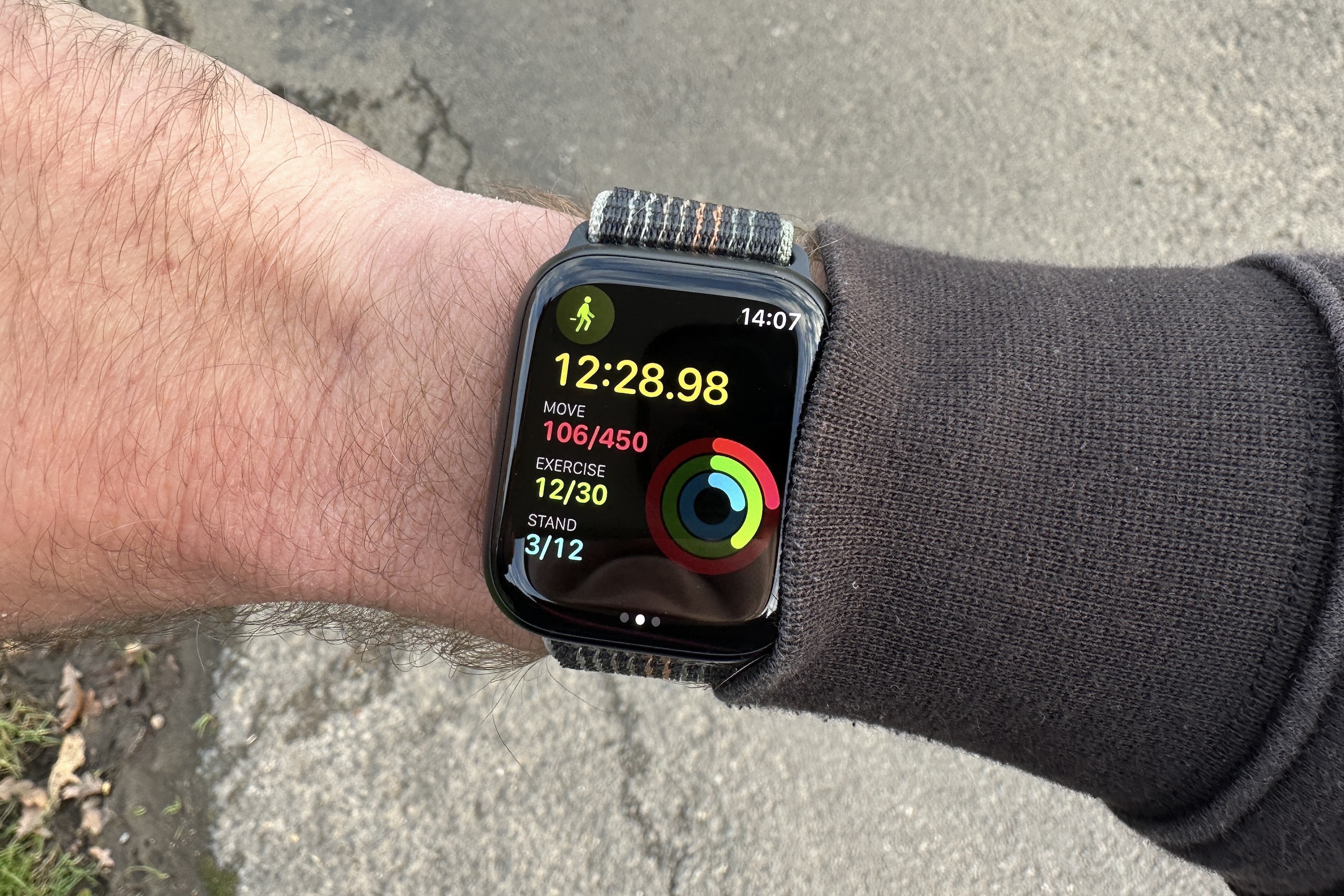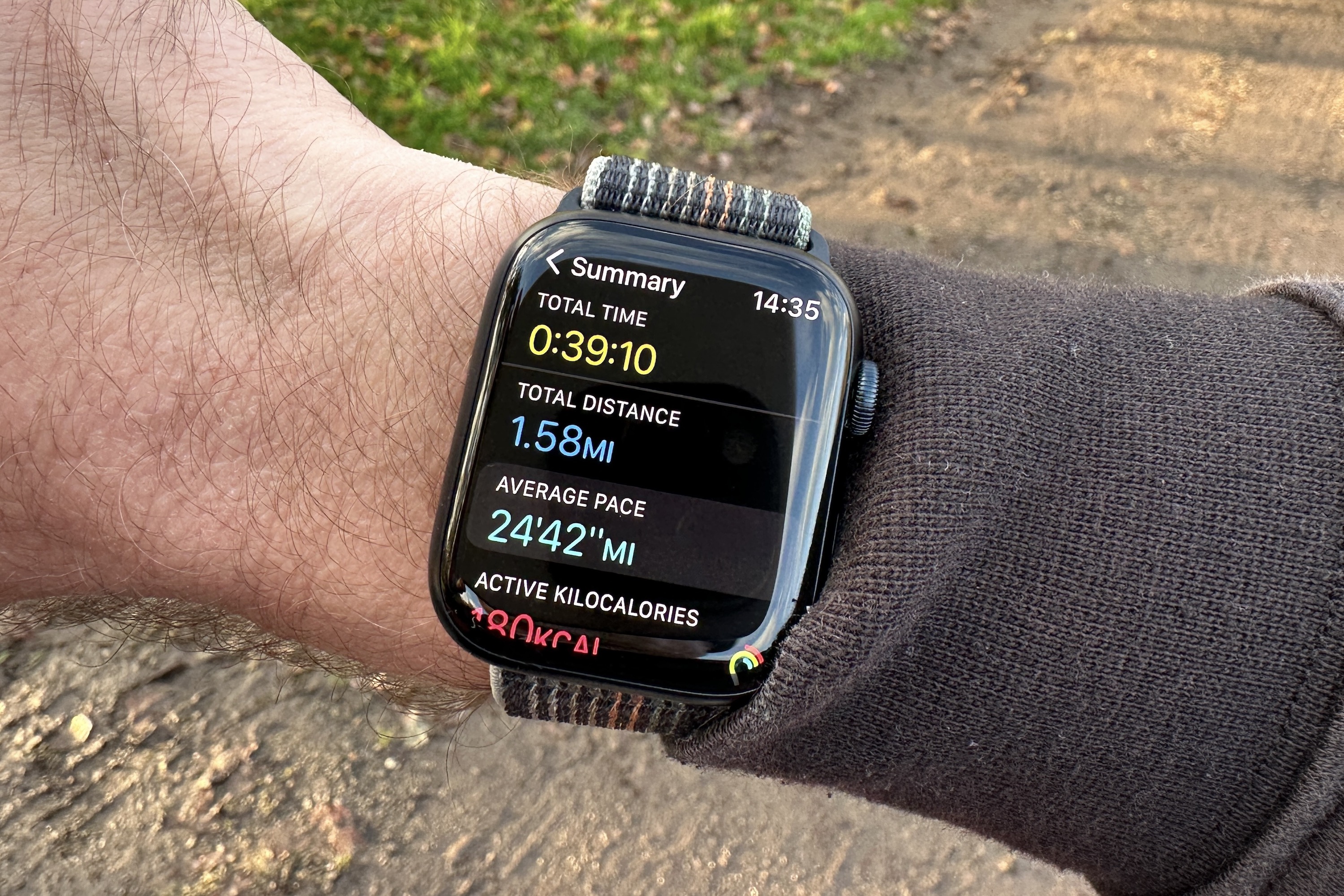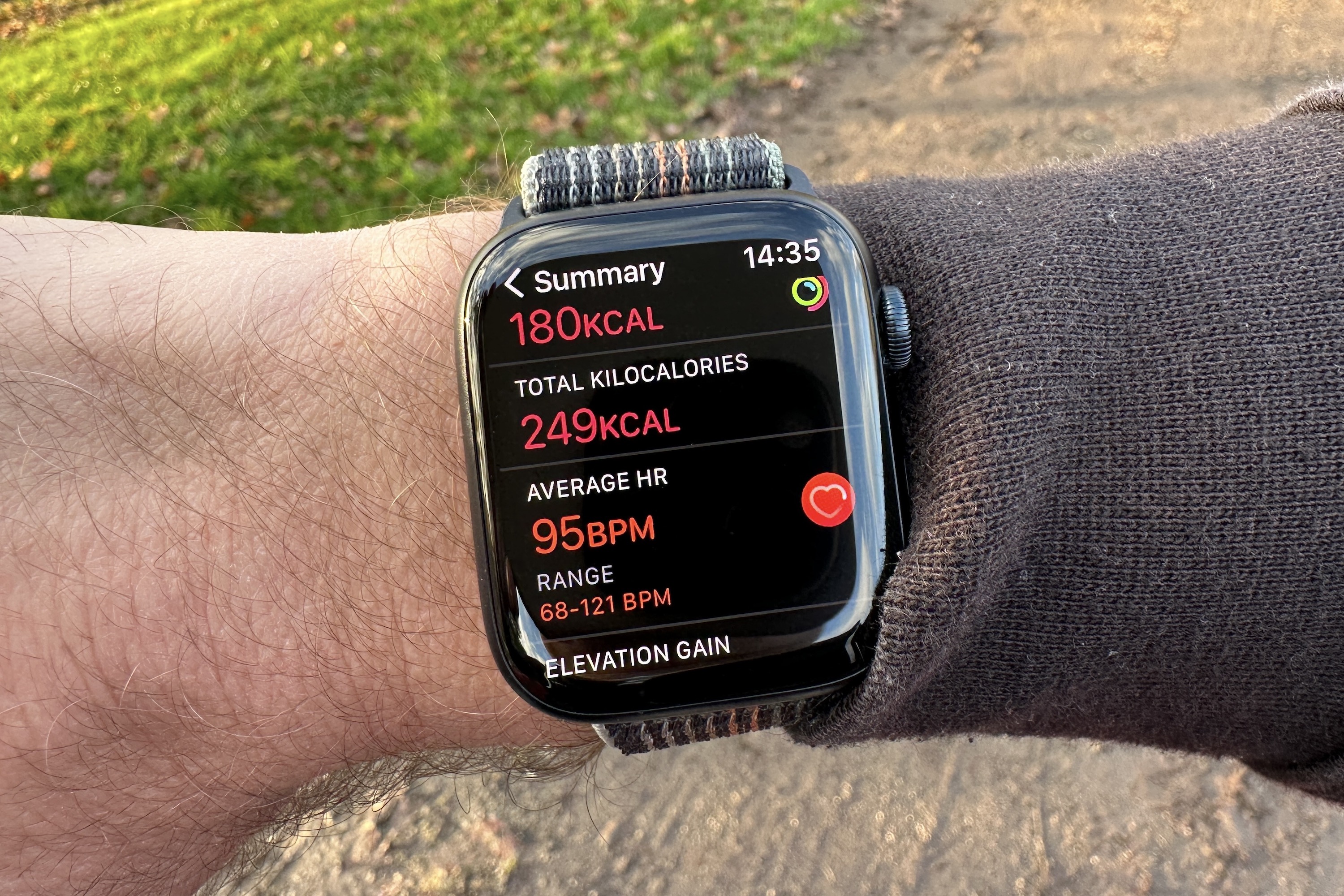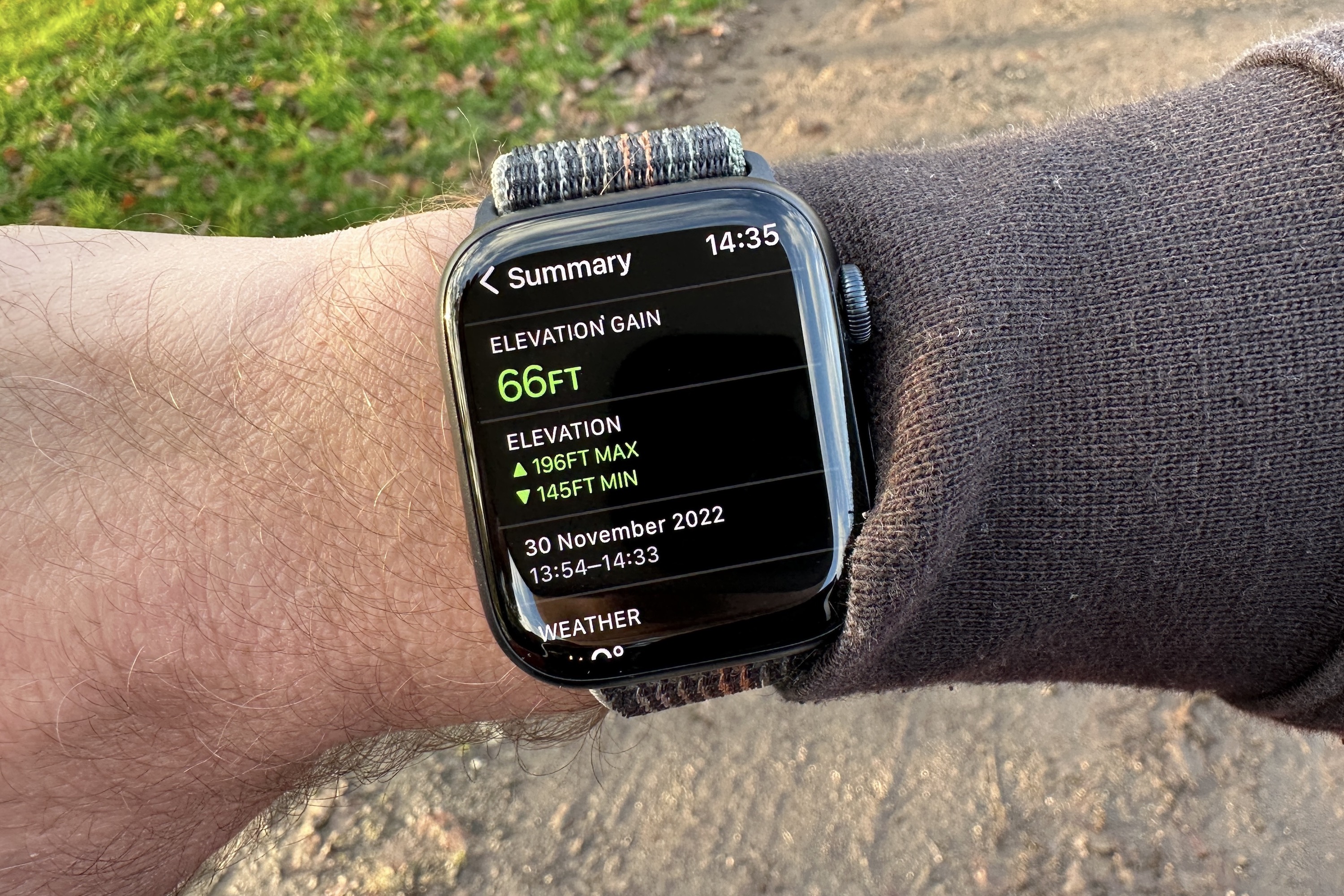One of the main reasons to wear a smartwatch is to track your health, exercise, and sleep. Both Apple and Samsung have comprehensive health platforms, Apple Health and Samsung Health, but are they really much different from each other?
We’ve been using both, connected to the Apple Watch Series 8 and the Samsung Galaxy Watch 5, to find out.
The apps

The apps installed on your phone are very important, not just to connect it to your smartwatch, but also to see all your data, so which one is best? Well, neither system requires only one app. On an iPhone, the standard Watch app connects the phone to your Apple Watch, while you need both Apple Health and Apple Fitness to see your data. All are pre-installed on your phone. The Apple Watch only works with the iPhone, remember.
To use the Galaxy Watch 5, you need Samsung’s Wear app to connect the smartwatch to your phone. Additionally, you need Samsung Health for all your exercise and health data, plus there’s a one-time installation of a plugin for the Galaxy Watch 5 if you aren’t using a Samsung phone. Both the Health and Wear apps come pre-installed on Samsung phones, and can be downloaded through Google Play for other Android phones.

Having to use Apple Health and Apple Fitness is a little confusing, and I’d really like to see Apple combine the two together into one, single app in the future. It would make it more streamlined. Having only one app, as with Samsung Health, makes more sense, but there is a potential problem with this, as we will see later on. Connection and setup of both smartwatches are simple and don’t take long, although you do have to pay more attention to the Samsung platform after you’ve paired the watch.
Why? Some features are turned off by default or require some kind of activation to work, including blood oxygen monitoring, stress monitoring, and the always-on screen. All these have to be set up individually, and may not work until you do. There are fewer steps needed to enable all the Apple Watch’s features, as most are on by default, making it a more user-friendly smartwatch out-of-the-box.
Daily activity

This is the main screen you see when you want to check how active (or not) you’ve been during the day. It needs to be informative, but not too dense. Apple’s “ring” system has three rings to close on a daily basis, covering your movement goal, which is based on calorie burn, the amount of exercise you’ve done in minutes, and an hourly stand goal.
It’s very clear how far you are from meeting your targets, plus there’s a complete breakdown of each category underneath the ring display if you want more details. It’s excellent.

Samsung uses a similar three-goal system covering activity/calorie burn, active time in minutes, and steps. These are displayed in the shape of a heart rather than a circle. Apple doesn’t put any emphasis on step count at all. It’s there in the app, but you really have to search for it, while Samsung incorporates it into its daily set of goals. I personally like to know my step count as it’s an easy metric to understand, but appreciate that calorie burn is a better, more motivational figure to work towards.
The Apple Watch clearly shows your progress towards your goals using the ring system when you open Apple Fitness on the watch, while Samsung’s heart system is the first Tile to the right of the main watch face. The way Apple and Samsung’s daily activity goals’ data are displayed is very similar, and both are equally as effective.
Fitness tracking data
There are some interesting design differences n the app, but otherwise, the way the two record data during a workout is very similar. It’s simple to track a workout on both smartwatches, and there are multiple different modes to choose from.
I have found the GPS tracking on both smartwatches to be equally accurate, and the display on both to be equally informative during and after exercise. Samsung’s auto-pause when out walking or running is a distinct difference between the two, and it’s useful and highly accurate.
The Galaxy Watch 5 does provide a lot more information on your activity both during and after, but the way it’s presented is long-winded. The Apple Watch may show a little less data immediately after you complete a workout, but it is presented more concisely, and you don’t need to scroll very far to see everything you need to know.
After the data has synced with the app — something that happens automatically on both smartwatches and has been perfectly reliable on both — Apple manages to pull ahead of Samsung. In the Apple Fitness app, each workout clearly shows the data you want at the top of the screen. You immediately see what kind of workout it was, how long you exercised, calorie burn, and average heart rate.

If you walked or ran, you also get pacing, elevation, split times, and more additional data. Each section can be tapped to show more information, and you scroll down the page for GPS and weather data. It’s all very clear, and you really don’t have to dig for crucial information. Oddly, Samsung buries a lot of information further down the page, preferring to use a massive amount of space for the time, calorie burn, and heart rate chart. If GPS was active, the map dominates the top of the page.

It’s unfortunate because there’s a lot of rich data in the Samsung Health app, but you do have to scroll to find it. It adds in recovery time, VO2 max information, speed, cadence, and pacing, plus a lot more.
Samsung just seems to have no idea how to organize it, and instead just creates a big, long list for you to dig through. With better organization, Samsung Health would match and potentially beat Apple Fitness, but as it is, Apple’s app is more engaging, less complicated, and far less work.
Sleep tracking

Sleep data is found in the Apple Health app, not Apple Fitness. While the split makes sense when you consider the names of the apps, it’s not especially user-friendly. However, once again, the way Apple presents the data is more visually enticing and logical than the long-winded way Samsung shows the data in the Samsung Health app.
Apple puts the graph showing your sleep stages at the top of the page, along with your time asleep and time in bed. You can immediately see the quality of your sleep, and then drill down into more information below. The more you wear your Apple Watch and track your sleep, the greater the insights. However, you do have to explore the rest of the Health app to find individual reports on blood oxygen levels and heart rate.

The Samsung Health app shows your time asleep at the top of the page, but you have to scroll down to see the different stages. When you do, the app also shows blood oxygen and any snoring data, if you have the feature active. It’s a shame the page design has so much wasted space, as all the data you want is there. It would just be preferable to not have to scroll around to see it all.
What about wearing the smartwatches at night? I found the smooth, curved Apple Watch with a Sport Loop or Braided Sport Loop band very comfortable to wear overnight, and barely noticed it on my wrist. The standard Sport band, or the leather and metal bands, are less comfortable. I found it took longer to get used to wearing the Galaxy Watch 5 overnight, but the soft, standard Sport Band doesn’t get hot or sweaty. However, the Galaxy Watch 5 Pro is too big and heavy for me to wear overnight, as is the Apple Watch Ultra.
All the extras

Daily activity, workouts, and sleep are the core functions of both Samsung and Apple’s apps, but there are plenty of additional features that help provide a better picture of your health. There are feature differences between the smartwatches; for example, the Galaxy Watch 5 provides a body composition measurement and stress measurement, and the Apple Watch has Crash Protection and noise level warnings.
Dig into the Apple Health app, and there’s a wealth of information based on data the iPhone collects as you move around, with insight into everything from the way you walk to your body temperature taken from your wrist. You won’t want to see the data every day, but over time it becomes interesting to see how your body changes.
Apple Health is better at connecting to other platforms and apps than Samsung Health, which is limited to just a few. There is a third-party app called Health Sync that links Samsung Health to other products, including Fitbit, Garmin, and Coros watches. It also works with the Oura Ring and Withings products, but it does have a subscription fee attached. Apple Health is much better at connecting to other devices through Apple’s API program.
Which is the best to use?

Both Samsung Health and Apple’s Health and Fitness platforms are excellent, but there are subtle differences between them. Samsung tends to show a lot more information, or at least it doesn’t hide it away like Apple, but it makes the platform denser and less user-friendly. It’s unfortunate Apple has two apps, but this may be the reason both are better designed than Samsung Health — it’s able to spread data out to make it easier to digest.
Apple Health and Fitness apps make understanding your daily activity and exercise simple, and are ideal for casual or semi-serious athletes, along with people with specific needs, including if you’re in a wheelchair. Apple’s accessibility features also make the Apple Watch really easy to use, and while Samsung also has an extensive accessibility suite, it doesn’t appear quite as intuitive as Apple’s.
It’s a really close thing between these two. The Apple Watch Series 8 is the best smartwatch you can buy, and while Apple’s Health and Fitness apps can be confusing, the data they show is concise and helpful. WatchOS 9 is packed with great workout and health features, and all of this combined makes it my preferred smartwatch and workout partner. However, the Galaxy Watch 5 and Samsung Health are a very close second, let down mostly by the app design and Wear OS’s idiosyncrasies.
If you’re choosing a new phone and smartwatch combination and are focused on health and fitness, we recommend the Apple Watch and an iPhone, but a Samsung phone and the Galaxy Watch 5 come a very close second.
